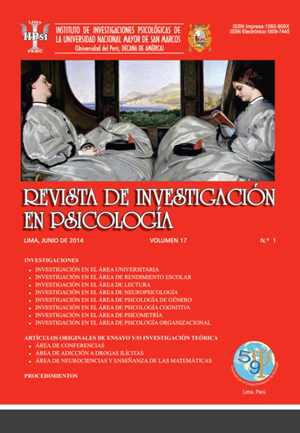The theory of the cerebral hemispheres and method botetano
DOI:
https://doi.org/10.15381/rinvp.v17i1.8983Keywords:
learning of mathematics, cerebral hemispheres, traditional methodAbstract
In order to explain the great results obtained by children in mental calculation, I am forced to find an answer in the field of learning theories. I consider that the Theory of Cerebral Hemispheres gives us the explanation that I was looking for. After getting many interesting results with more than 4000 children in countries like Peru, Bolivia and Mexico related to the learning of mental arithmetic in general and multiplication tables in particular , we find that the theory of the cerebral hemispheres were able to give us the necessary theoretical background we needed to explain these results that many consider very interesting. The poor results in PISA tests in the area of mathematics among children of our country led us to seek an alternative method to the traditional method based on memorization. In a search that took us several years, I finally found that gaming, reasoning, competition, challenge and learning based on the child's sensorial elements gave us this amazing results. We were able to capture the interest of children with games and stories that appealed directly to their imagination and this is precisely based on the Theory of the Cerebral Hemispheres. This article refers to the encounter of intensive teaching based on practical work and a theory that gives it the necessary support.Downloads
Published
Issue
Section
License
Copyright (c) 2014 César Botetano C.

This work is licensed under a Creative Commons Attribution-NonCommercial-ShareAlike 4.0 International License.
THE AUTHORS RETAIN THEIR RIGHTS:
a. The authors retain their trademark and patent rights, and also on any process or procedure described in the article.
b. The authors retain the right to share, copy, distribute, execute and publicly communicate the article published in the Journal of Research in Psychology (for example, place it in an institutional repository or publish it in a book), with acknowledgment of its initial publication in the Journal of Research in Psychology.
c. Authors retain the right to make a subsequent publication of their work, to use the article or any part of it (for example: a compilation of their work, lecture notes, thesis, or for a book), provided that they indicate the source. of publication (authors of the work, magazine, volume, number and date).






